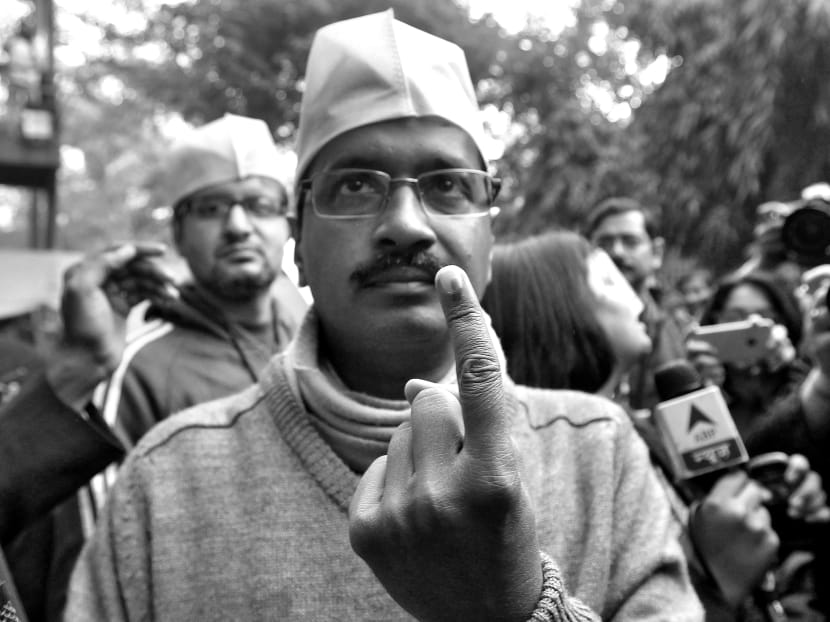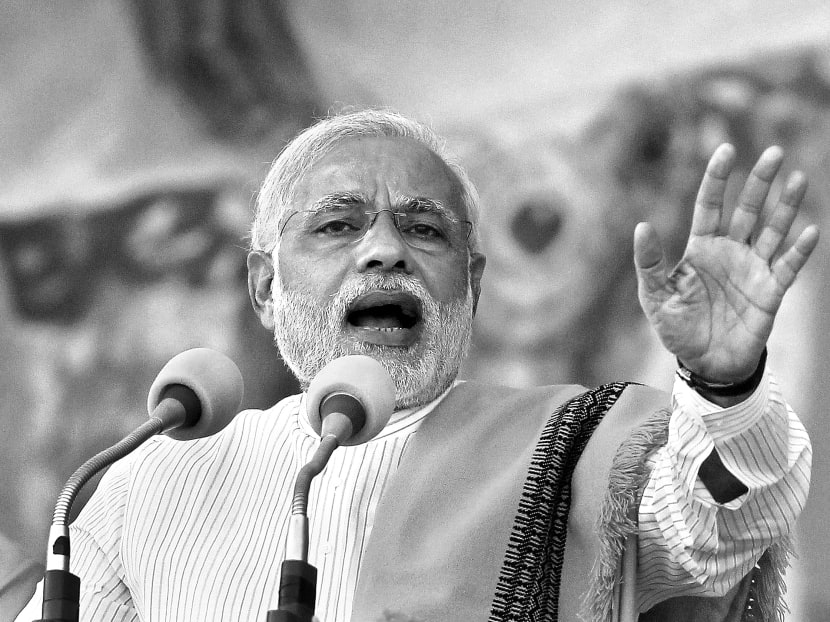The real players in India’s 2014 polls
The recently announced results of the five state elections in India, with the exception of the tiny north-eastern state of Mizoram, presented a bleak picture for the Congress party that leads the country’s coalition government.


The recently announced results of the five state elections in India, with the exception of the tiny north-eastern state of Mizoram, presented a bleak picture for the Congress party that leads the country’s coalition government.
Congress was trounced in the northern state of Rajasthan, the National Capital Territory of Delhi and Madhya Pradesh in central India. It also lost, albeit in a closer contest, in the state of Chhattisgarh, home to a Maoist-inspired insurgency. The winner in all four states was the opposition Bharatiya Janata Party (BJP), though it fell short of an outright majority in Delhi.
The Congress defeats had been predicted, but the margins in Rajasthan, Madhya Pradesh and Delhi were unexpected. The real story of the elections, however, was the stunning debut by Aam Aadmi (which in Hindi means “common man”) Party (AAP) in Delhi where it placed second to BJP by a narrow margin and was way ahead of Congress.
AAP leader Arvind Kejriwal has become the mascot of an alternative brand of politics. Mr Kejriwal, an engineer trained at the elite Indian Institute of Technology and a former bureaucrat, hardly had a national footprint before he got associated with activist Anna Hazare’s anti-corruption movement in 2011. Since Mr Hazare’s historic fast in 2011 though, the latter’s star has waned, while Mr Kejriwal’s has grown brighter.
‘COMMON MAN’S’ RISING STAR
AAP’s remarkable success was based on disgust among urban voters with the cynical, corrupt politics associated with India’s traditional parties.
This was reflected in the voter turnout in Delhi, where the numbers are usually low. This time, however, the turnout was nearly 10 per cent higher than at the last state elections in 2008. The question on everybody’s mind was whether AAP could replicate its success outside Delhi.
It was not only popular disgust with corruption that propelled AAP. It benefited from the extensive use of social media, intensive coverage from the traditional media and a huge cohort of first-time and young voters.
Close to 15 per cent of India’s voters are estimated to be in the 18-to-23 age bracket. These young voters have traditionally not been very enthused by elections. However, at least in Delhi, AAP seems to have got them out to vote.
Unlike other parties, AAP got most of its money from contributions from individuals. Some 30 per cent of the party’s campaign funds came from Indians living abroad, a sign of how much it has caught the imagination of Indians worldwide.
Today, India is close to one-third urban and growing rapidly, giving hope to parties like AAP. But at least in next year’s general elections, it is unlikely AAP will have the organisational strength to field credible candidates across India.
BJP AND THE CONGRESS
Though AAP might be the story of the state elections, the real players in 2014 will be the BJP, the Congress and a host of strong regional parties.
The BJP would be hoping to build on its electoral success in the four states, which send 13 per cent of India’s 543 MPs to the lower house of Parliament. The BJP has already touted the sustained campaigning by its prime ministerial candidate Narendra Modi as the reason for its electoral success.
The story might not be that simple. While the BJP victories in the four states were expected due to a combination of strong chief ministers and anti-incumbency sentiment against the Congress, the huge margin of victory in three states could be ascribed to Modi.
On the other hand, AAP’s performance in Delhi could mean that Modi alone might not be enough to win votes in the absence of strong local leaders and candidates.
The morale of the Congress -- already battered by corruption scandals, charges of wasting its mandate in its current term in government and high inflation -- has hit a new low after the elections. It has belatedly pushed through legislation on food security, land acquisition and most recently on an anti-corruption ombudsman. But these might not have much of an impact in the 2014 elections.
RAHUL VS MODI? NOT QUITE
Contrary to the Congress’ usual strategy, there are also plans afoot to officially announce Rahul Gandhi as the party’s prime ministerial candidate. How much of an impact this will have on the Congress flock and the electorate at large is debatable.
Rahul has now been around for two terms as a member of Parliament but has not assumed any formal position in government. In that sense, he does not have a record to show; neither is he a great speaker on the stump. On both counts, Modi is ahead. Indeed, the BJP would like nothing better than to pitch the elections as a presidential contest between Modi and Rahul.
But that might be wishful thinking on the part of the BJP.
In most Indian states, including the northern state of Uttar Pradesh which sends 80 MPs to Parliament, there are strong regional parties in the mix. For the BJP the magic figure would be winning something close to 200 seats which would then enable it to attract coalition partners.
But because Modi is such a divisive figure, several regional parties, especially those that have a Muslim voter base, would be wary of allying with the BJP.
For the Congress, which is more compatible as an ally, even 150 seats looks a slim possibility. Ultimately the regional parties could well decide the fate of India’s next election either in coalition with the BJP or Congress or a Third Front where they band together. The latter option, however, will be a fractious one and unlikely to last a full term.
ABOUT THE AUTHOR:Ronojoy Sen is a senior research fellow at the Institute of South Asian Studies and Asia Research Institute, National University of Singapore.






